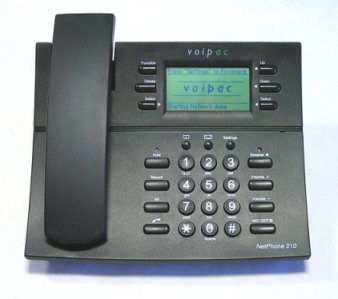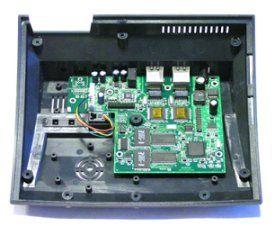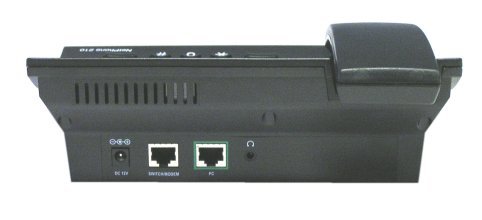Device Profile: Voipac NP 210 network phone
Nov 4, 2004 — by LinuxDevices Staff — from the LinuxDevices Archive — 9 viewsThe Voipac Net Phone (NP) 210 is an H323.v4-compatible IP phone. It was created by Voipac, formerly Levi Systems, an eight-year-old company based in Slovakia that also sells USB phones, softphones and softswitches, VoIP servers, and IP phones, as well as CPU modules.

The NP 210 runs Linux on an XScale PXA255 chip
The NP 210 uses the ITU-T's H.323v4 protocol for signalling and control of IP telephony, rather than the IETF's Session Initiation Protocol (SIP). However, Voipac can also supply a SIP version on request.
In addition to VoIP telephony, the NP 210 supports NetMeeting v3.0 and other H.323 compatible applications for voice transmission and web conferencing. It also supports Instant Messaging via Jabber, and email services, and it includes a built-in calendar.
The NP 210 supports a variety of public and private internet connections. It can be configured with a static address, or DHCP, and also supports PPPoE and NAT. Fast Start and H.245 Tunneling are supported, along with H.450 hold, transfer, and forward services.
What's under the hood?
The NP 210 is based on an Intel XScale PXA255 chip, clocked at 200MHz. It boots from 8MB of Flash into 32MB of SDRAM (64MB upgrade available).


Top and bottom views, inside the NP 210
Two Ethernet ports are provided on a built-in hub, which enables one port to be connected to the network and the other to a PC. Thus, the device can be installed inline with a networked PC, without requiring additional wiring.

The Voipac NP 210 offers dual RJ-45s
The monochrome LCD 128×64 dot matrix display is driven as a character device buffer, and can display the date and time, call station name, dialed numbers, and other information.
Ten buttons can be programmed for memory and speed dialing, while eight buttons can be programmed for functions such as hold, rec, speaker, mute, alt, call, and more. The device also includes an alpha-numeric keypad.
The phone includes an integrated speaker and microphone, for speakerphone operation, as well as a headset connector.
Software side
On the software side, the NP 210 runs a 2.4.19-rmk7-pxa2 Linux kernel, while a 2.6.7-vpac1 kernel implementation is also under development. The device supports remote firmware upgrades.
Supported codecs include:
- G.723.1
- LPC-10
- GSM-06.10
- MSGSM
- G.711-uLaw, G.711-Alaw
Why Linux?
Voipac uses Linux in most of its products, a company spokesperson said. In developing the NP 210, the company received support only from the open source community, including members of the ARMLinux and Debian communities.
Booting Linux without a bootloader, achieving faster startup, and writing the display driver were the biggest challenges the team faced during development.
Voipac expects Linux to continue to dominate both the network appliance and embedded markets.
This article was originally published on LinuxDevices.com and has been donated to the open source community by QuinStreet Inc. Please visit LinuxToday.com for up-to-date news and articles about Linux and open source.